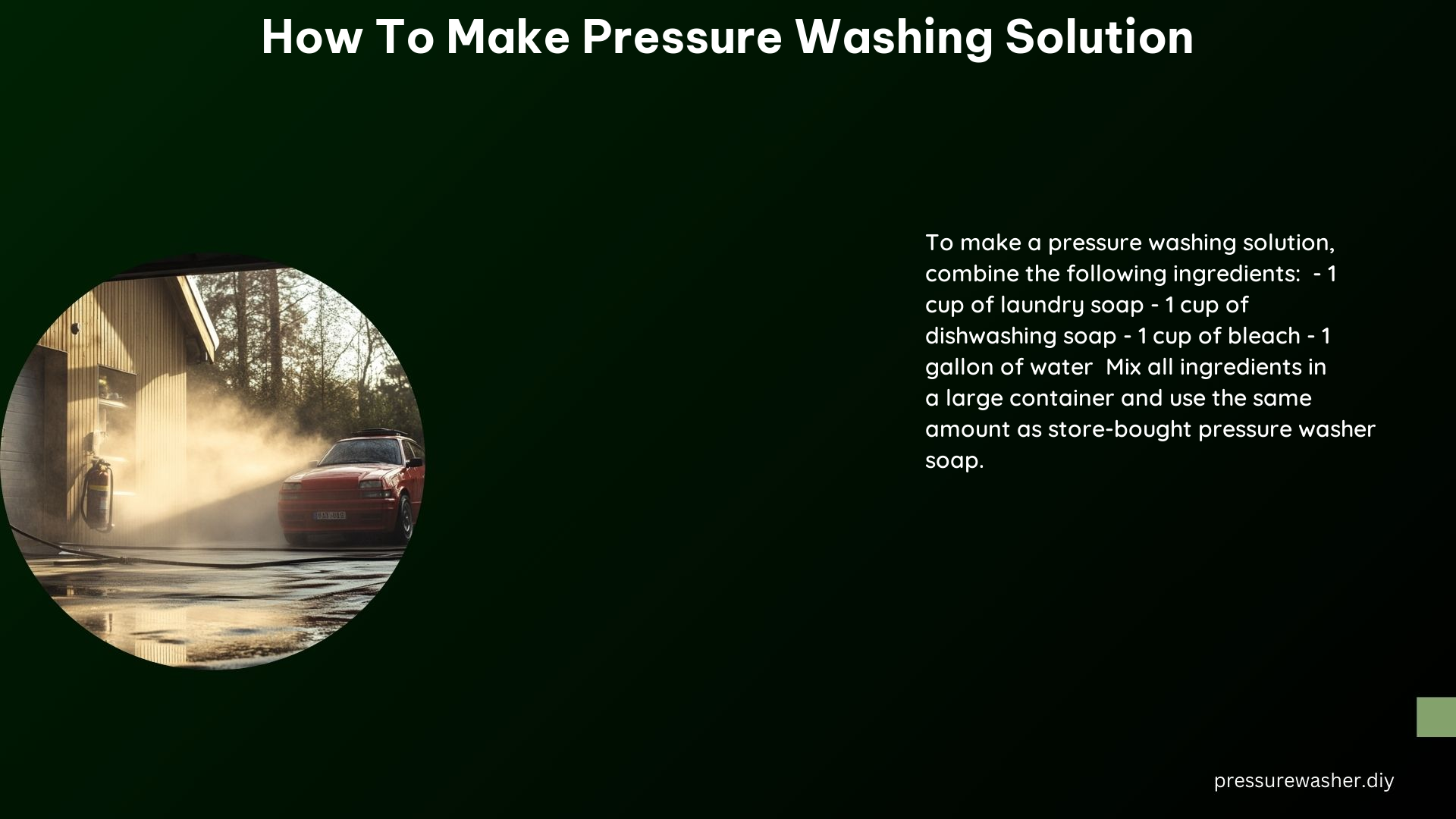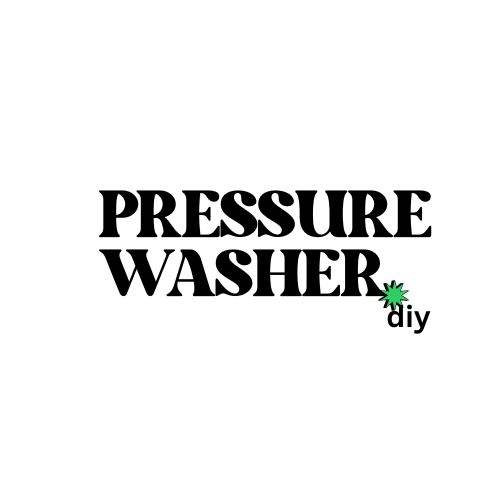Making your own pressure washing solution can be a cost-effective and customizable way to tackle various cleaning tasks around your home or business. Whether you’re looking to clean siding, concrete, or other surfaces, the right homemade solution can make the job easier and more efficient. In this comprehensive guide, we’ll explore several methods for creating effective pressure washing solutions using common household ingredients.
Method 1: Simple Bleach and Water Solution
This straightforward solution is a great starting point for general cleaning tasks. The combination of bleach and water helps to break down dirt, grime, and even mildew, while the dish soap acts as a surfactant to help the solution penetrate and lift the debris.
Ingredients:
– 1/2 gallon of store-bought bleach (5.25% sodium hypochlorite)
– 1 1/2 gallons of water
– 4 ounces of ultra-concentrated, non-antibacterial dish soap
Instructions:
1. Mix all the ingredients in a 2-gallon pump sprayer, ensuring the solution is well-combined.
2. Apply the solution to the surface, starting from the bottom and working your way up.
3. Allow the solution to dwell for 5-10 minutes, then rinse the surface thoroughly with the pressure washer.
Tip: For best results, use a high-quality, non-abrasive dish soap that is free of dyes and fragrances.
Method 2: DIY Pressure Washer Detergent

This homemade detergent can be used as a direct replacement for store-bought pressure washer soaps, providing a more cost-effective solution without sacrificing cleaning power.
Ingredients:
– 1 cup of laundry soap (preferably a concentrated, biodegradable formula)
– 1 cup of dishwashing soap (also a concentrated, biodegradable formula)
– 1 cup of household bleach
– 1 gallon of water
Instructions:
1. Mix all the ingredients in a large container, ensuring the solution is well-blended.
2. Use the same amount of this homemade detergent as you would with a store-bought pressure washer soap, typically 1-2 ounces per gallon of water.
Tip: For best results, use high-quality, concentrated laundry and dishwashing soaps that are free of harsh chemicals and dyes.
Method 3: General Purpose Mixture
This versatile mixture can be used for a wide range of cleaning tasks, from siding and decks to driveways and patios.
Ingredients:
– 1 gallon of water
– 1/3 cup of phosphate-free laundry detergent (powder)
– 2/3 cup of household cleaner (such as an all-purpose cleaner or degreaser)
– 1 cup of white vinegar (optional)
Instructions:
1. Start by mixing the dry ingredients (laundry detergent) in a large container.
2. Slowly add the wet ingredients (water, household cleaner, and vinegar) while stirring to ensure a homogeneous solution.
3. Use this mixture as you would a store-bought pressure washer solution, adjusting the concentration as needed for the specific cleaning task.
Tip: The addition of vinegar can help to cut through grease and grime, while also providing a natural disinfectant.
Method 4: Concrete Surface Mixture
This eco-friendly solution is specifically formulated for cleaning concrete surfaces, such as driveways, patios, and walkways.
Ingredients:
– 1 gallon of water
– 1/2 cup of Borax
– 1/2 cup of washing soda
– 1 tablespoon of liquid dish soap
Instructions:
1. Start by mixing the dry ingredients (Borax and washing soda) in a large container, preferably the night before use.
2. The following day, add the liquid dish soap and mix the solution slowly to incorporate all the ingredients.
3. Use this mixture to clean concrete surfaces, allowing it to dwell for 5-10 minutes before rinsing thoroughly.
Tip: Borax and washing soda are natural, eco-friendly cleaning agents that help to break down and lift dirt and grime from concrete surfaces.
Method 5: Bleach and Caustic Soda Solution
This specialized solution is particularly effective for removing microbial biofilms, which can be a common problem on surfaces that are frequently exposed to moisture, such as siding, decks, and patios.
Ingredients:
– 3% bleach solution
– 3% caustic soda (sodium hydroxide) solution
Instructions:
1. Thoroughly wet the surface you intend to clean.
2. Apply the bleach and caustic soda solution, ensuring the surface remains wet for at least 20 minutes to allow the solution to work.
3. Rinse the surface thoroughly with the pressure washer.
Tip: This method is highly effective for removing stubborn biofilms, but it’s important to use caution when handling the caustic soda solution, as it can be corrosive.
Tips and Considerations
- Always read the labels of the ingredients you use to ensure they are compatible and safe for the surfaces you are cleaning.
- Test the detergent on a small, inconspicuous area first to avoid any damage or discoloration.
- Rinse the surface thoroughly after pressure washing to avoid streaking or damage from harsh chemicals.
- Consider using biodegradable and environmentally friendly detergents to minimize the impact on your surroundings.
- Adjust the concentration of the solutions based on the specific cleaning task and the condition of the surface.
- Wear appropriate personal protective equipment, such as gloves and eye protection, when handling and applying the solutions.
By following these methods and tips, you can create effective, customized pressure washing solutions to tackle a wide range of cleaning challenges around your home or business. Remember to always prioritize safety and environmental considerations when working with any cleaning chemicals.
References:
- https://www.contractortalk.com/threads/exterior-house-cleaning-solution.18554/
- https://advantageproservices.com/blog/soap-and-detergent-to-use-for-pressure-washing/
- https://excellentexteriorsva.com/how-to-make-your-pressure-washer-detergent/
- https://washnit.com/guide-to-different-pressure-washing-mixtures/
- https://www.reddit.com/r/pressurewashing/comments/139q56r/what_is_best_diy_approach_for_my_driveway_i_have/
